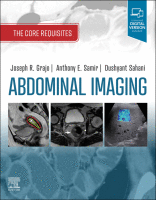Physical Address
304 North Cardinal St.
Dorchester Center, MA 02124

Anatomy, embryology, and pathophysiology ◼ The prostate is a cone-shaped exocrine gland located inferior to the bladder and anterior to the rectum. It surrounds the uppermost segment of the urethra and is enveloped by an incomplete fibromuscular capsule. ◼ The…

Anatomy, embryology, pathophysiology ◼ The adrenal glands are multifunctioning, inverted Y-shaped, retroperitoneal endocrine glands normally located superior to the kidneys in the perirenal space ( Fig. 28.1 ). ◼ The adrenal glands mediate the stress response by releasing cortisol and…

Anatomy, embryology, pathophysiology ◼ The urothelium is the mucosa composed of transitional epithelium that lines the renal calyces and pelvis, ureters, bladder, and much of the urethra. Further anatomic and clinical classification defines the upper tract as the renal collecting…

Anatomy, embryology, pathophysiology ◼ Urinary tract obstruction (UTO) is a commonly encountered clinical scenario that can affect all age groups. In the pediatric population, the underlying pathology is often congenital in nature ( Box 26.1 ), whereas in adults, there…

Anatomy, embryology, pathophysiology ◼ The renal parenchyma can be divided into an outer region called the cortex and an inner region called the medulla. ◼ Parenchymal abnormalities can be divided by their involvement. ◼ Entire kidney (glomerulonephritides, amyloidosis, drugs, and…

Anatomy, embryology, pathophysiology Please see Chapter 23 for discussion. Techniques and protocols Please see Chapter 23 for discussion. Specific disease processes Benign solid lesions Oncocytoma ◼ An oncocyte is a large transformed epithelial cell with fine granular eosinophilic cytoplasm. Oncocytomas…

Anatomy, embryology, and pathophysiology Anatomy ◼ The kidneys are paired, bean-shaped, retroperitoneal organs that primarily function in the excretion of metabolic waste. ◼ The concave medial surface is known as the renal hilum. ◼ Each collecting system consists of the…

Anatomy, embryology, pathophysiology ◼ Renal calculi result from crystallization of supersaturated inorganic and organic compounds and proteins within renal tubular fluid, renal interstitial fluid, or in the urinary collecting system along the papillary surfaces. Supersaturation and crystallization of stone constituents…

Anatomy, embryology, pathophysiology ◼ Complex drainage system of lymphatic capillaries connected by ducts connected to central lymph node ‘stations’ following a similar course to the arterial system ( Figs. 21.1 and 21.2 ). ◼ Lymph nodes play an integral part…

Anatomy, embryology, pathophysiology Embryology Splenogenesis initiates in the fifth week of embryological life. The dorsal mesogastrium anchors the stomach posteriorly; it is within the two leaves of this mesogastrium that the spleen forms from mesenchymal cells. Asymmetric stomach growth results…